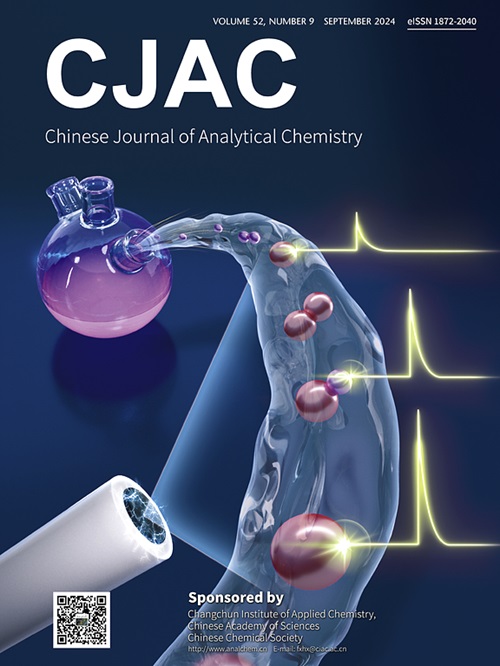A network analysis framework for Traditional Chinese Medicine in treating Alzheimer’s disease: From core herbal pairs to key component networks
IF 1.3
4区 化学
Q4 CHEMISTRY, ANALYTICAL
引用次数: 0
Abstract
Alzheimer’s disease (AD) is a chronic neurodegenerative disorder for which traditional Chinese medicine (TCM) has shown potential therapeutic advantages. This study aimed to explore the medication patterns and core herbal pairs used in the treatment of AD by integrating data mining, network pharmacology, and molecular docking techniques. Relevant literature on TCM interventions for AD was retrieved from five major databases, and core herbal pairs were identified. To further investigate the multi-target and multi-pathway mechanisms of these pairs and their key components, a comprehensive network was constructed. A core herbal pair—Acori Tatarinowii Rhizoma-Polygalae Radix was selected, and its component–target–pathway network was established. Gene Ontology (GO) and Kyoto Encyclopedia of Genes and Genomes (KEGG) enrichment analyses were conducted to elucidate biological functions and signaling pathways, while molecular docking was performed to validate the interactions between key compounds and their targets. A total of 482 TCM formulas for AD were analyzed, identifying Acori Tatarinowii Rhizoma-Polygalae Radix as the most representative core pair. Its major active components, including phenylpropanoids (e.g., caffeic acid, β-asarone) and saponins (e.g., tenuigenin), were found to modulate inflammation, apoptosis, and synaptic plasticity through critical pathways such as MAPK and PI3K-Akt. Molecular docking demonstrated strong binding affinities between these key components and pivotal targets such as AKT1 and MAPK3. This study establishes a multi-layered framework, from big data analysis to functional validation of specific components, offering a clear pathway for investigating the structure-effect relationships in TCM. Furthermore, it proposes an innovative computational approach for analyzing the complex mechanisms of TCM, providing new insights into optimizing TCM formulations and developing novel drugs for AD.

中医治疗阿尔茨海默病的网络分析框架:从核心草药对到关键成分网络
阿尔茨海默病(AD)是一种慢性神经退行性疾病,中医药已显示出潜在的治疗优势。本研究旨在结合数据挖掘、网络药理学和分子对接技术,探索治疗AD的用药模式和核心中药对。从5个主要数据库中检索中药干预AD的相关文献,并确定核心中药对。为了进一步研究这些基因对及其关键成分的多靶点、多通路机制,我们构建了一个完整的网络。选取了核心中药对——石菖蒲-白芷,建立了其组分-靶点-通路网络。通过基因本体(GO)和京都基因与基因组百科全书(KEGG)富集分析来阐明其生物学功能和信号通路,通过分子对接来验证关键化合物与其靶点之间的相互作用。共对482个治疗AD的中药方剂进行了分析,确定了最具代表性的核心对为石菖子-茯苓。其主要活性成分包括苯丙素(如咖啡酸、β-细辛酮)和皂苷(如黄芪黄素),通过MAPK和PI3K-Akt等关键通路调节炎症、细胞凋亡和突触可塑性。分子对接表明,这些关键成分与关键靶点如AKT1和MAPK3之间具有很强的结合亲和力。本研究建立了从大数据分析到特定成分功能验证的多层次框架,为中医构效关系的研究提供了清晰的途径。此外,它还提出了一种创新的计算方法来分析中药的复杂机制,为优化中药配方和开发新型AD药物提供了新的见解。
本文章由计算机程序翻译,如有差异,请以英文原文为准。
求助全文
约1分钟内获得全文
求助全文
来源期刊
CiteScore
3.60
自引率
25.00%
发文量
17223
审稿时长
35 days
期刊介绍:
Chinese Journal of Analytical Chemistry(CJAC) is an academic journal of analytical chemistry established in 1972 and sponsored by the Chinese Chemical Society and Changchun Institute of Applied Chemistry, Chinese Academy of Sciences. Its objectives are to report the original scientific research achievements and review the recent development of analytical chemistry in all areas. The journal sets up 5 columns including Research Papers, Research Notes, Experimental Technique and Instrument, Review and Progress and Summary Accounts. The journal published monthly in Chinese language. A detailed abstract, keywords and the titles of figures and tables are provided in English, except column of Summary Accounts. Prof. Wang Erkang, an outstanding analytical chemist, academician of Chinese Academy of Sciences & Third World Academy of Sciences, holds the post of the Editor-in-chief.

 求助内容:
求助内容: 应助结果提醒方式:
应助结果提醒方式:


